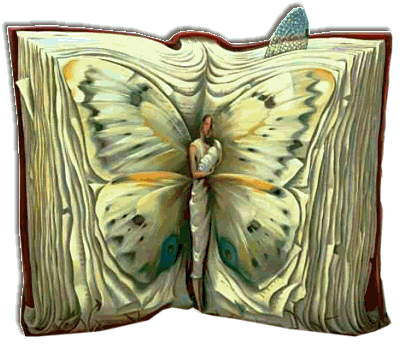He aquí algunos de sus antecedentes:
1. El sobrenombre de “PAN” lo tomó del dios GRIEGO del mismo nombre. Pan era un FAUNO que pertenecía al cortejo del dios DIONISOS. Con este personaje no sólo comparte el nombre, también ambos tocan la SIRINGA o flauta de Pan (conjunto de varias FLAUTAS de caña, paralelas y unidas) - aunque en algunas traducciones lo llaman "CARAMILLO", otro tipo de flauta. Así mismo, aunque PETER no sea un FAUNO (un ser mitad hombre, mitad CABRA), sí que cabalgó a lomos de una cabra en su primer libro “Peter Pan en los jardines de KENSINGTON”. Por último, al dios PAN se le relacionaba con la estación PRIMAVERAL, y Peter solía engañar a un ÁRBOL de los jardines de Kensington tocándole MÚSICA para que creyera que ya había llegado la PRIMAVERA y así FLORECIERA antes de tiempo.

 Peter Pan
Peter Pan2. Se nos dice en el LIBRO nombrado anteriormente, que PETER PAN solía acompañar a las ALMAS de los niños en parte del RECORRIDO para que no tuvieran miedo. El dios griego HERMES también se encargaba de acompañar las almas de los DIFUNTOS hasta el INFRAMUNDO griego. Además, el GALLO era un animal que simbolizaba a HERMES, y Peter Pan “CACAREA como un gallo” cuando se siente FELIZ. Y, por supuesto, Hermes también podía VOLAR porque tenía "ALAS en los pies".
3. Según nos cuenta este LIBRO, cuando los BEBÉS se caen de su COCHECITO y se PIERDEN en los jardines de KENSINGTON, las HADAS los recogen y esperan TRES días para ver si sus padres regresan a por ellos. En el caso de no hacerlo, se los llevan al País de NUNCA JAMÁS, donde nunca crecerán. En el FOLCLORE tradicional, a las HADAS les encantaba RAPTAR niños y, a veces, esos niños ya no crecían. En el cuento de “RUMPELSTINSKI”, un ENANO quiere llevarse consigo a un BEBÉ y le da de plazo a su madre tres días (como las hadas de los JARDINES) para lograr evitarlo, pues en ese TIEMPO aún no podía apoderarse del NIÑO.
4. PETER tocaba su CARAMILLO para animar las FIESTAS de las HADAS. Se solía sentar sobre una gran SETA en el centro del CORRO. Sin embargo, él no fue el primero en hacer esto: el antiguo DUENDE PUCK tenía la misma costumbre.
Puck y las hadas - Richard Dadd
5. Algunos ELFOS del folclore eran grandes SEDUCTORES de doncellas humanas. De la misma manera actúa PETER, convenciendo a MAIMIE a quedarse con él en los JARDINES y, más tarde, a WENDY y a sus descendientes femeninas a ESCAPAR con él hasta el País de NUNCA JAMÁS. Sin embargo, si bien aquellos ELFOS no eran todos bien intencionados, el bueno de PETER siempre acababa dejándolas volver, quedándose SOLITO de nuevo.
Podría seguir contando montones de cosas sobre este MAGNÍFICO personaje, pero sería demasiado largo. En mi opinión, todas estas referencias no lo hacen en absoluto menos ORIGINAL sino que enriquecen el MITO que representa.
¡Hasta la próxima entrada!
Julia
*****
Peter Pan is a character who has become famous all over the world. Today hardly anyone has read the original book, however, everyone knows him. This is a fascinating character, at the crossroads of many references. Maybe that's why it has become a universal character, because it embodies great multitude of ancient myths, and it appeals to the depths of the human being, awakening them.
Here's some background:
I could continue writing lots of things about this magnificent character, but it would be too long. In my opinion, all these references do not make it less original at all, on the contrary, they enrich the myth he represents.
Until next post!





No sabía todas esas relaciones de otras mitologías con Peter Pan, alguna había intuido, otras había leído, pero verlo todo tan bien expresado y con tanto entusiasmo me ha dado ganas de leer el libro otra vez! Un abrazo y gracias! ^^
ResponderEliminar¡Gracias a ti por leerlo! ^-^
ResponderEliminar